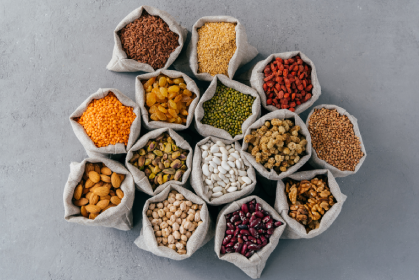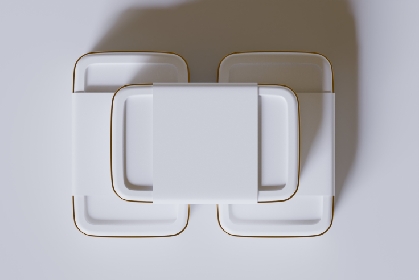Solutions for the Packaging and Labeling of Food and Dairy Products


Packaging and labeling of food and dairy products are critical for preserving product quality over time, ensuring consumer trust, and meeting legal requirements. Proper packaging and labeling solutions extend the shelf life of products, reduce waste, preserve nutritional value, and provide clear information to consumers. This week, we focus on effective packaging and labeling solutions for food and dairy products.
1. Packaging Materials and Techniques

The materials used in packaging food and dairy products aim to preserve freshness, ensure hygiene, and minimize potential damage during transportation. Below are some important considerations for packaging materials:
- Plastic Packaging: Plastic is the most common material used for dairy products. It is durable, lightweight, and flexible. However, due to the fact that it is not eco-friendly, recyclable or more biodegradable alternatives are increasingly preferred.
- Glass Packaging: Glass bottles are also a common choice for milk and dairy products. They are recyclable and can preserve the product for longer, making them an eco-friendly option.
- Carton Boxes: Carton packaging is widely used for liquid products such as milk and yogurt. Cartons are recyclable and environmentally friendly, making them a sustainable solution.
- Vacuum Packaging: Used for cheese and other dairy products, vacuum packaging prevents air exposure, extending the product’s shelf life. Vacuuming helps to reduce oxidation and microbial growth.
- Modified Atmosphere Packaging (MAP): This technique extends the shelf life of products by altering the atmosphere inside the packaging. It provides effective protection, especially for perishable products.
2. Labeling Solutions
Labeling plays a key role in providing consumers with essential information about food and dairy products at the point of sale. Information such as product content, nutritional values, expiration date, and other details must be clear and accurate on the label. A good labeling system helps consumers make informed choices and strengthens their trust in the brand.
- Legal Requirements: Labels must include mandatory information to protect consumer health. These details include the product name, ingredient list, net quantity, production and expiration dates, origin, usage instructions, and storage conditions.
- QR Codes and Smart Labels: QR codes, increasingly used in packaging solutions, offer consumers quick access to more detailed product information. Smart labeling systems monitor freshness and temperature concurrently, providing both producers and consumers with added confidence.
- Eco-Friendly Labeling: To reduce environmental impact, recyclable paper and water-based inks are used instead of plastic-based labels.
3. Sustainability and Innovative Solutions
Sustainability is becoming increasingly important in packaging and labeling solutions for food and dairy products. Eco-friendly packaging materials and energy-efficient production techniques offer both cost advantages and reduced adverse impact to the environment.
- Biodegradable Packaging: As an alternative to plastic, packaging made from starch-based and compostable materials is becoming more common.
- Innovative Technologies: RFID (Radio Frequency Identification) technology enables more efficient tracking during product transportation and stock management. Additionally, innovations such as smart and temperature-sensitive labels provide consumers with extra assurance about product freshness and safety.
Packaging and labeling of food and dairy products are essential for protecting consumer health and extending product shelf life. The right choice of materials, sustainable solutions, and adherence to legal requirements play a crucial role in this process. By embracing innovative technologies and offering environmentally friendly and practical solutions, both producers and consumers can contribute to building a safer and more sustainable future.
We look forward to seeing you dear readers, in the next blogs. stay healthy.